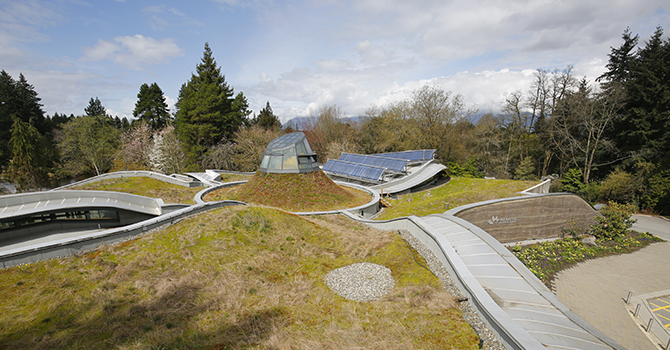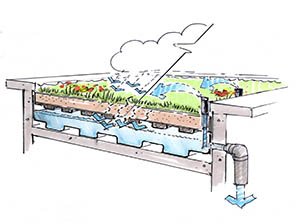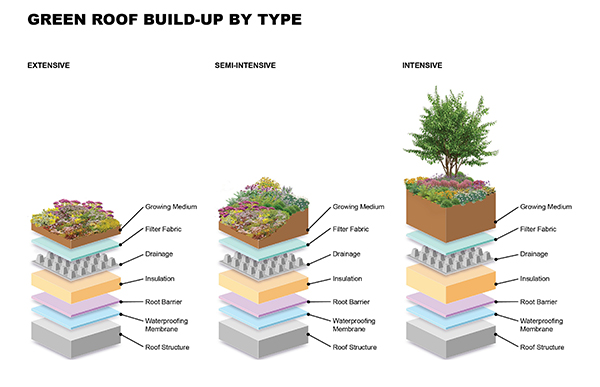

What you need to know
The green roof is a unique tool that offers a range of environmental and social co-benefits that advance many of our strategies and objectives.
Advancing climate and rainwater strategies on private property
We are enhancing water quality, resilience, and livability by implementing green rainwater infrastructure (GRI) tools, such as green roofs, on private properties.
A green roof, also known as a vegetated roof, living roof, blue-green roof, or eco-roof, is a planted area on a built structure. Many green roofs are located on rooftops, but they can also be found on top of structures at ground-level.
It is designed and constructed with multiple layers that work together to provide several co-benefits, including:
- Managing rainwater
- Reducing urban heat
- Enhancing biodiversity and habitat
- Providing or complementing amenity space
- Increasing access to nature
Types of green roofs
Green roofs are generally classified by their growing medium depth as:
- Extensive
- Intensive
- Semi-intensive (in-between variation)
Information icon Definitions for green roof types and soils depths vary. The ranges mentioned in these sections represent only an example.
Co-benefits of green roofs
A green roof is a system of components that work together to provide multiple environmental, social, and economic co-benefits.
Blue-green roofs (review diagram) also use shallow water reservoirs located below a growing medium. This reservoir can also help irrigate the plants.
Depending on the growing medium depth, choice of plants, and other design features, certain co-benefits can be created or emphasized in our community.
How rainwater detention and retention work in grey infrastructure and green roofs
Pipes and other grey infrastructure move rainwater and sewage away from private property. Sometimes this involves rainwater ‘detention’.
GRI systems like green roofs and natural assets like trees and plants also use rainwater ‘retention’. The use of this water has many co-benefits, and may delay the need for grey infrastructure upgrades.

